Confirmit Inbound Connector
About the Confirmit Inbound Connector
You can use the Confirmit inbound connector to load surveys from your Confirmit account into XM Discover.
Qtip: You’ll need to have an existing account on Confirmit to set this connector up.
Setting up a Confirmit Inbound Job
Qtip: The “Manage Jobs” permission is required to use this feature.
- On the Jobs page, click New Job.
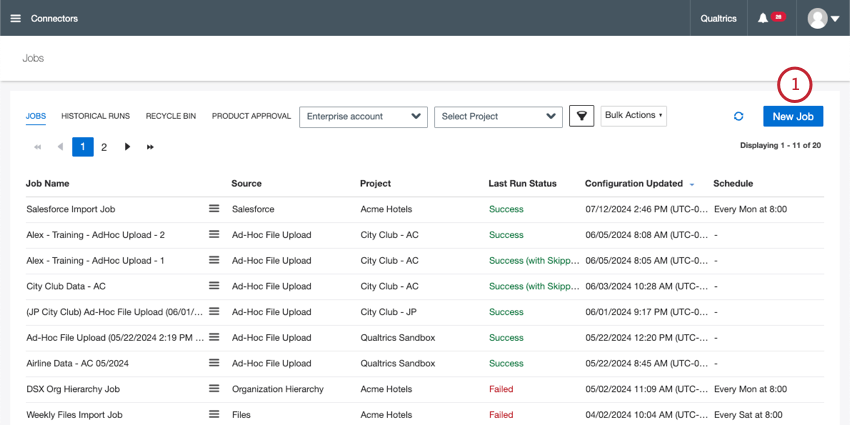
- Select Confirmit.
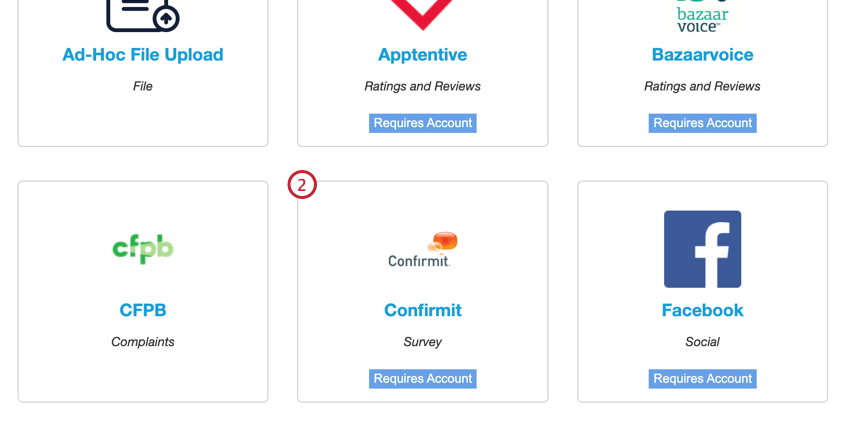
- Give your job a name so you can identify it.
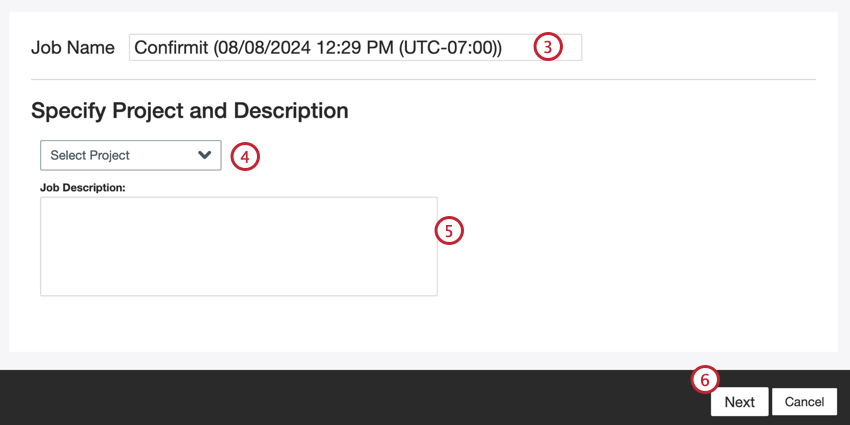
- Choose the project to load data into.
- Give your job a description so you know its purpose.
Qtip: This is a personal description only displayed on the Jobs page, and is not mapped as part of the job’s data.
- Click Next.
- Select an existing Confirmit account, or add a new one.
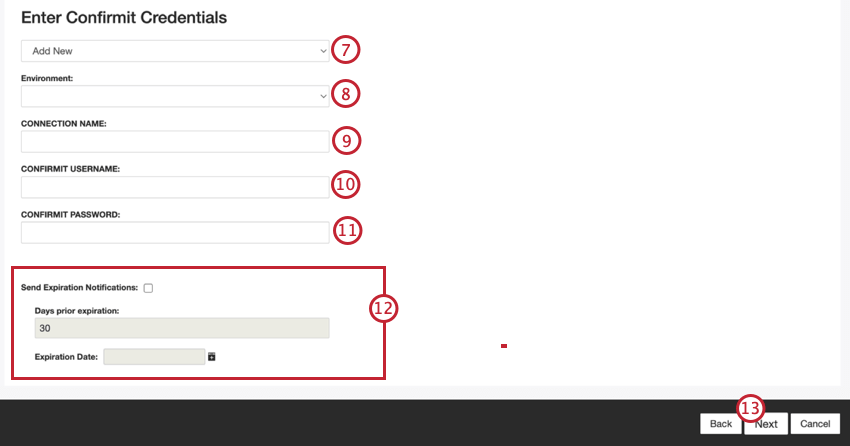
- Select the environment to pull data from.
- Enter a name for your connection.
- Enter your Confirmit account’s username.
- Enter your Confirmit account’s password.
- If you want your credentials to expire, then configure the following options:
- Send Expiration Notifications: Select this option to allow your credentials to make sure your credentials expire.
- Days prior expiration: If enabling expiration notifications, enter how many days you’d like to be notified before the expiration. You may enter a value between 1 to 100 days.
- Expiration Date: Set the date when the credentials will expire. Click on the box to open a calendar to pick the date.
- Click Next.
- Select one of the available survey projects to upload data from.
- Click Next.
- If needed, adjust your data mappings. See the Data Mapping support page for detailed information on mapping fields in XM Discover. The Default Data Mapping section has information on the fields specific to this connector and the Mapping Conversational Fields section covers how to map data for conversational data.
- Click Next.
- If desired, you can add data substitution and redaction rules to hide sensitive data or automatically replace certain words and phrases in customer feedback and interactions. See the Data Substitution and Redaction support page.
Qtip: Click Download Sample Data to download an Excel file with sample data to your computer.
- Click Next.
- If desired, you can add a connector filter to filter the incoming data to limit what data is imported.
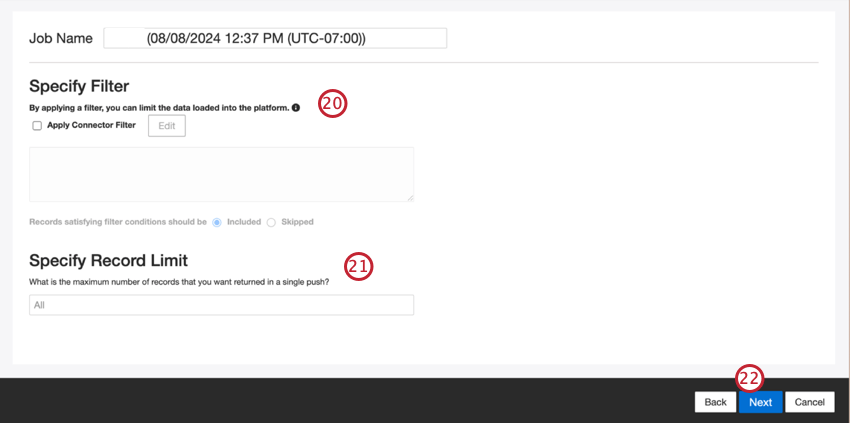
- You can also limit the number of records imported in a single job by entering a number in the Specify Record Limit box. Enter “All” if you would like to import all records.
Qtip: For conversational data, the limit is applied based on conversations rather than rows.
- Click Next.
- Choose when you’d like to be notified. See Job Notifications for more information.
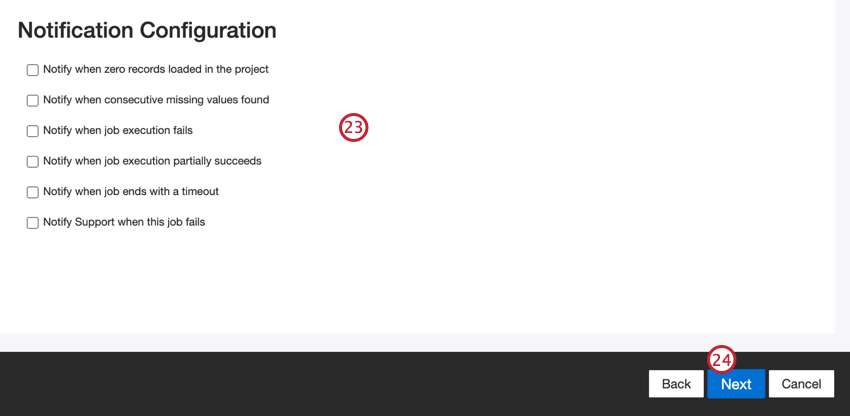
- Click Next.
- Choose how duplicate documents are handled. See Duplicate Handling for more information.
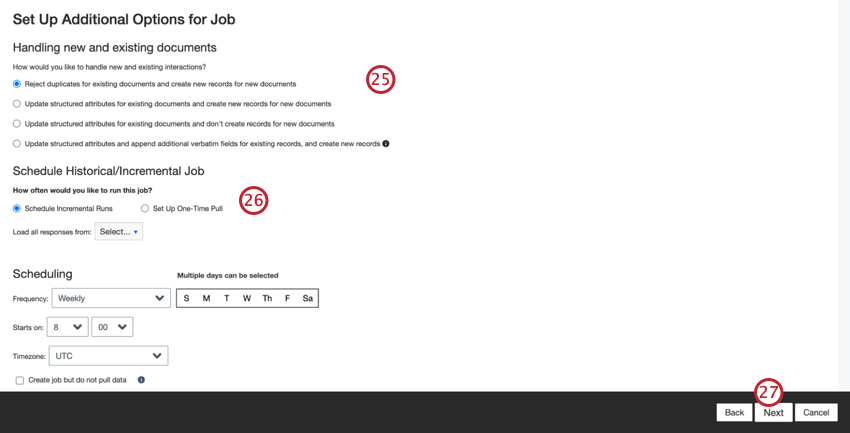
- Choose Schedule Incremental Runs if you’d like your job to run periodically on a schedule, or Set Up One-Time Pull if you’d like the job to run just once. See Job Scheduling for more information.
- Click Next.
- Review your setup. If you need to change a specific setting, click the Edit button to be brought to that step in the connector setup.
- Click Finish to save the job.
Default Data Mapping
This section contains information on the default fields for Confirmit inbound jobs.
- natural_id: A unique identifier of a document. It is highly recommended to have a unique ID for each document to process duplicates correctly. By default, XM Discover uses source IDs prefixed by the connector’s name via a custom transformation: Natural ID = Connector-name;Source-ID. You cannot edit this field.
- document_date: The primary date field associated with a document. This date is used in XM Discover reports, trends, alerts, and so on. You can choose one of the following options:
- interiew_end: The date and time a respondent finished an interview. This is the default data for document_date.
- interview_start: The date and time a respondent started an interview.
- If source data contains other date fields, you can choose one of them.
- You can also set a specific document date.
- feedback_provider: Identifies data obtained from a specific provider. For Confirmit uploads, this attribute’s value is set to “Confirmit” and cannot be changed.
- source: Identifies data obtained from a specific source. This can be anything that describes the origin of data, such as the name of a survey or a mobile marketing campaign. By default, this attribute’s value is set to “Confirmit.” Use custom transformations to set a custom value, define an expression, or map it to another field.
- feedback_type: Identifies data based on its type. This is useful for reporting when your project contains different types of data (for example, surveys and social media feedback). By default, this attribute’s value is set to “Survey”.
- job_name: Identifies data based on the name of the job used to upload it. You can modify this attribute’s value during the setup via the Job Name field that is displayed at the top of each page during the setup.
- loadDate: Indicates when a document was uploaded into XM Discover. This field is set automatically and cannot be changed.
Qtip: See Mapping Conversational Fields for information on how to map conversational data.